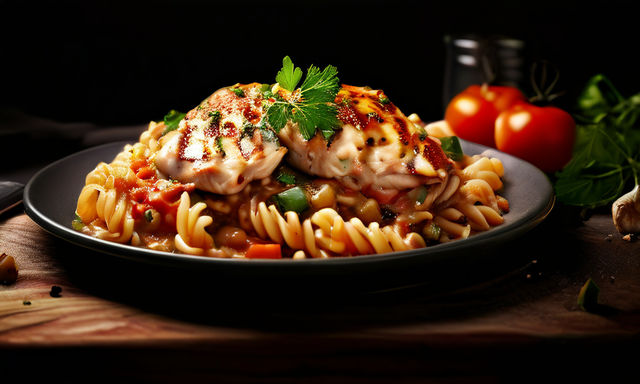What 25g of Protein Looks Like Video
Protein is a crucial macronutrient that plays a key role in building and repairing tissues, making enzymes and hormones, and supporting overall health. For those focusing on fitness, weight management, or general health, understanding how to effectively incorporate protein into your diet is essential. However, not all protein sources are created equal in terms of calorie content and portion size. This article provides a visual and nutritional guide to what 25 grams of protein looks like from various sources, helping you make informed dietary choices.
Choosing the Right Protein Source for Your Needs
When selecting a protein source, consider not only the protein content but also the calorie density and nutritional value. For example:
- - Weight Loss: Opt for lean proteins like chicken or egg whites, which provide protein without too many extra calories.
- - Muscle Building: Choose denser protein sources like protein powders, which can be easily added to diets without filling you up too much.
- - Balanced Diet: Incorporate a variety of protein sources to benefit from different nutrients. Foods like kidney beans and lentil pasta offer fiber and other minerals in addition to protein.
Visualizing 25g of Protein
Here’s how you can meet your protein needs with different foods, each providing approximately 25 grams of protein, alongside their calorie counts to help with dietary planning:
1. Cheese (110g) - 470 Calories
Cheese is a delicious source of protein, particularly favorites like cheddar or mozzarella. However, it’s also high in calories and fat. Approximately 110 grams of cheese will give you 25 grams of protein but comes with a hefty 470 calories.
2. Kidney Beans (1.5 cans) - 402 Calories
Kidney beans are not only rich in protein but also in fiber, which can help with digestion and sustained energy levels. To get 25 grams of protein from kidney beans, you would need to consume about 1.5 cans, totaling around 402 calories.
3. Chicken (110g) - 115 Calories
Chicken, especially the breast portion, is a highly popular protein source because it's low in fat and calories while being high in protein. A 110-gram serving of cooked chicken breast provides 25 grams of protein with just 115 calories, making it an excellent choice for weight management.
4. Cashews (130g) - 910 Calories
Cashews are a tasty snack and a good protein source but are very high in calories. To get 25 grams of protein, you would need about 130 grams of cashews, which amounts to a whopping 910 calories, primarily from fats.
5. Egg Whites (7 eggs) - 120 Calories
Egg whites are an excellent low-calorie protein source. Seven egg whites will provide around 25 grams of protein and only 120 calories, making them ideal for those looking to lose weight or maintain a lean diet.
6. Lentil Pasta (120g) - 435 Calories
Lentil pasta is a fantastic alternative to traditional pasta for those looking for additional protein and fiber in their diet. A 120-gram serving of cooked lentil pasta will give you 25 grams of protein for 435 calories.
7. Protein Powder (1/3 cup) - 130 Calories
Protein powder, especially whey or plant-based varieties, is an efficient way to boost your protein intake. About one-third of a cup, depending on the brand and type, is needed to reach 25 grams of protein, generally adding up to around 130 calories.

How to Incorporate These Options Into Your Diet
Understanding portion sizes and the corresponding calorie intake is crucial for effectively incorporating these protein sources into your diet, especially if you are managing your weight or muscle mass. Here are some tips:
- - Balance Your Meals: Include a variety of protein sources throughout the day to not only meet your protein needs but also to obtain other essential nutrients.
- - Consider Your Caloric Needs: Choose protein sources that align with your overall dietary goals, whether you’re aiming to lose weight, gain muscle, or maintain your current weight.
- - Prepare in Advance: Meal prepping can help manage portion sizes and prevent overeating. Pre-portion your protein sources for the week to simplify meal preparation and ensure dietary consistency.
-
- Diversify Your Protein Sources:
To ensure you're getting a broad range of amino
acids and other nutrients, include a variety of
protein sources in your diet, from animal-based to
plant-based.
Conclusion
Understanding what 25 grams of protein looks like in various foods can help you tailor your diet to meet your specific nutritional needs. Whether you're trying to lose weight, build muscle, or simply maintain a healthy lifestyle, choosing the right protein sources is crucial. By balancing protein-rich foods with their caloric intake, you can enjoy a diverse and nutritious diet that supports your overall health goals.
Disclaimer: This blog post is for informational purposes only and does not constitute medical advice. Always consult with a healthcare professional before making significant changes to your diet, especially if you have specific health conditions or dietary needs.
Ready to level-up?
Create meal plans 10x faster, follow up with your clients through our mobile app, and never struggle with meal planning or recipe management again.